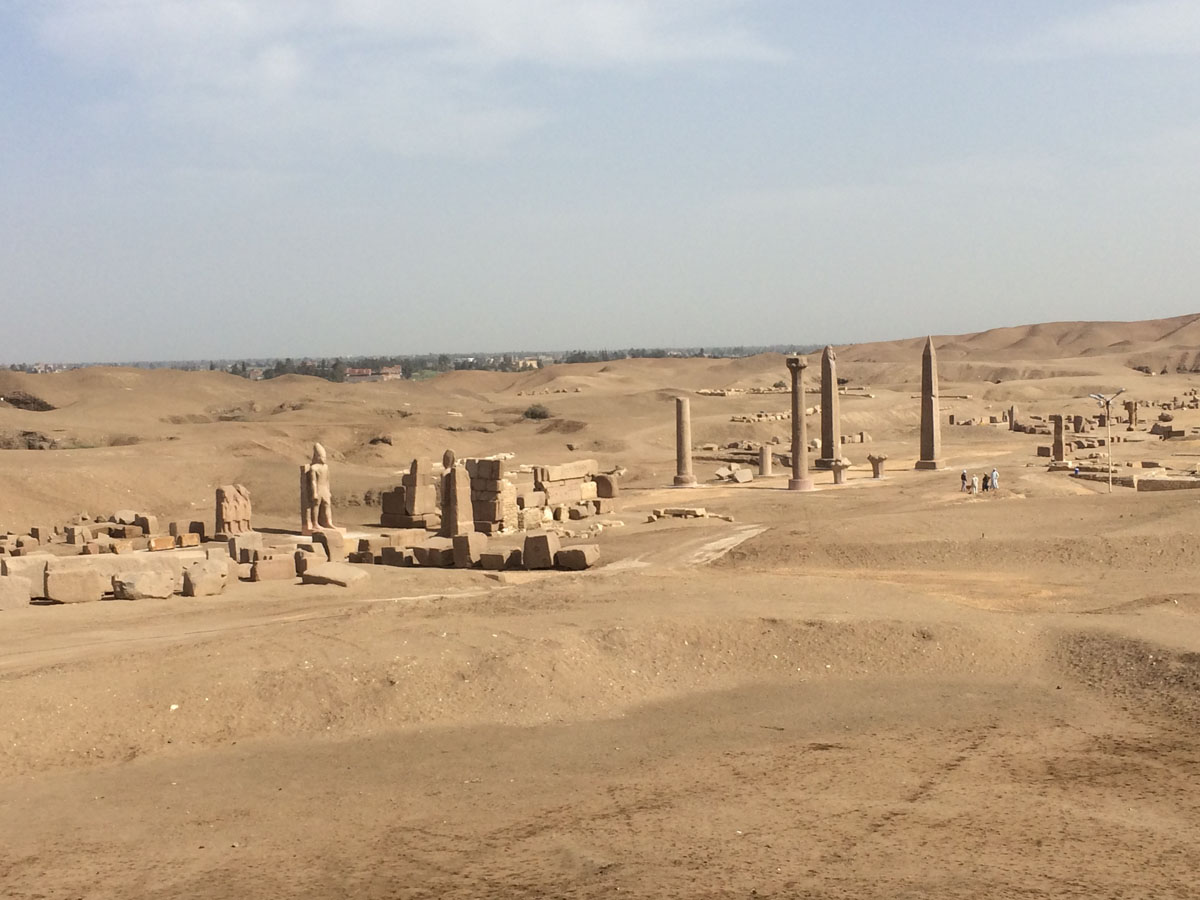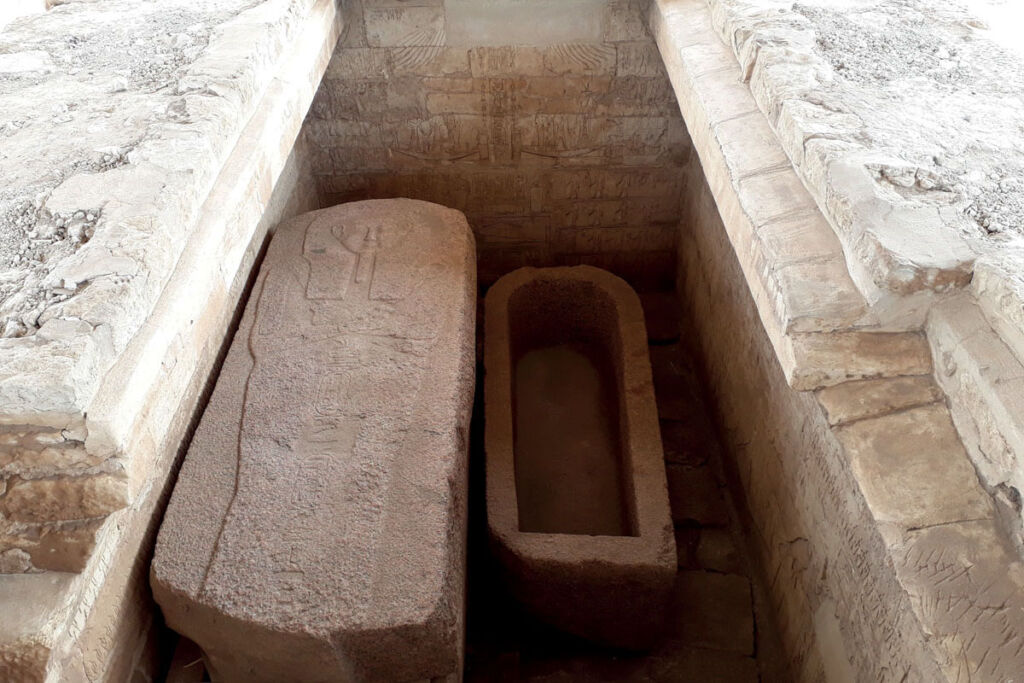[LUM#14] A grain of salt in the eternity of the pharaohs
Salt for preservation? Not always... And that is precisely the problem facing the pharaohs Osorkon II and Psusennes I, whose eternity is now under threat. Their tombs, located in Tanis in the Nile Delta, are undergoing deterioration due to the presence of salt water in their masonry. Where does this water come from? It's a mystery that Séverin Pistre, a researcher at Hydrosciences Montpellier*, has set out to investigate.

"Obelisks, enormous blocks of granite, and stone colossi barely visible above the sand stretching as far as the eye can see." Welcome to the royal necropolis of Tanis, located in the heart of the Nile Delta, the eternal resting place of Pharaohs Osorkon II and Psousennès I. These 3,000-year-old tombs are endangered by saltwater infiltration, which is causing the engravings and paintings that adorn them to deteriorate, as well as altering the blocks and joints that make them up. This is a tragedy for history, and the solution is not obvious.
In the middle of the desert and nearly 25 km from the sea, the origin of this brackish water raises questions. To solve this mystery, Séverin Pistre, a researcher at the Hydrosciences Montpellier laboratory, traveled to Egypt with many questions and a few hypotheses in mind. "Initially, it was an expert curator at the Louvre museum who, faced with this conservation issue, thought it necessary to study the water at this site. That is to say, surface runoff linked to rain, but also the probability of a water table located under the tombs," he explains.
The testimony of the sand
To test these hypotheses, the hydrogeologist started with almost nothing, namely a few handfuls of sand collected from the site. Deep down, there was yellow sand corresponding to the ancient dune. "It's called ghezira. It's a sand typical of these sites, which is very permeable to water and in which the water table could be found." Closer to the surface, there is brown sand "which is very impermeable and on which rainwater can flow and run off to the water table, thus raising its level," describes Séverin Pistre.
In order to verify the presence of this underground water table, the researcher went further. To a depth of exactly 27 meters, using piezometers. These small devices, equipped with electrodes, can detect the presence of water in the subsoil and also measure its level. This work was made easier by the existence of old boreholes on the site, dating back to an operation carried out by the Egyptian authorities some fifteen years earlier. "Thanks to several measurement points, we were able to confirm the presence of the aquifer less than a meter below the tombs. From there, we were also able to work on the direction of water flow , for example. "
Proof through electricity

Although the culprit seemed obvious, the salty nature of this groundwater still needed to be verified. This could be done with a simple laboratory analysis. However, in the land of the pharaohs, no samples of any kind are allowed to leave the country. Séverin Pistre therefore continued his investigation on site, equipped with a conductivity meter. "This device measures the electrical conductivity of water. The saltier the water, the more current it conducts, so it's a very reliable method. And in this case, I found extremely salty water, sometimes very close to seawater." This result was confirmed by analyses carried out in a laboratory in Cairo.
At this stage, there is no longer any doubt that it is indeed this salty groundwater that, through capillary action, rises up to the tombs and causes their deterioration. But how can this phenomenon be prevented? According to the researcher, there are several ways to deal with this problem. The first is to " dismantle the tombs in order to slide a sheet of lead under the water table before rebuilding them. This is effective but very difficult, both literally and figuratively," the researcher points out. The second option is to lower the water table, "in other words, to bring it down to a depth where the salts can no longer reach the tombs through capillary action. This requires a quasi-permanent pumping system."
The Salt of Mystery
While the mystery of water has now been solved, that of salt remains shrouded in mystery. How can its presence in this arid, desert region be explained? "When aquifers are close to the sea, as in Mauguio for example, a phenomenon known as salt wedging occurs. This means that seawater, which is denser than fresh water, gradually seeps under the aquifer, but here we are too far from the sea for that to happen, " explains Séverin Pistre.
Other hypotheses are being considered, such as the ancient presence of these salt waters, which could have been trapped thousands of years ago, or a phenomenon linked to evaporation. "Together with our colleagues at the Montpellier Geosciences Laboratory, we are conducting geochemical analyses on the isotopes contained in this salt water to try to determine its origin. We still have a lot of work to do, " concludes the researcher. Proof that even in the 21st century, the mysteries of the pharaohs have lost none of their intrigue.
Read more on the same topic:
# Science Fun: From Egyptian tombs to the litholamination workshop
Find UM podcasts now available on your favorite platform (Spotify, Deezer, Apple Podcasts, Amazon Music, etc.).
*Hydrosciences Montpellier (University of Montpellier – CNRS – IRD)